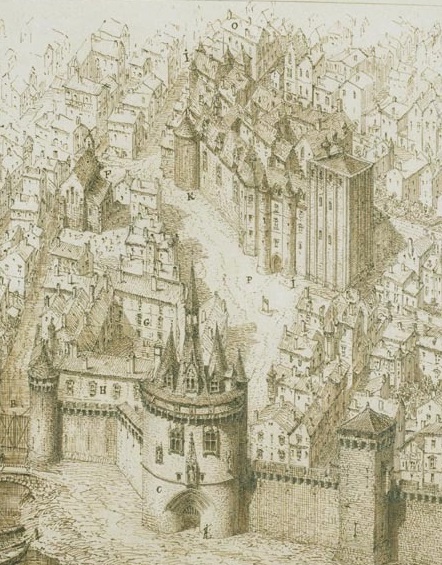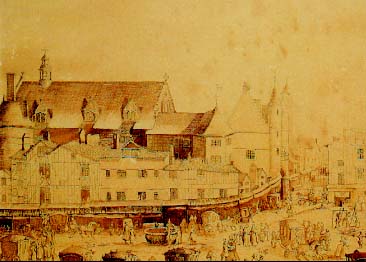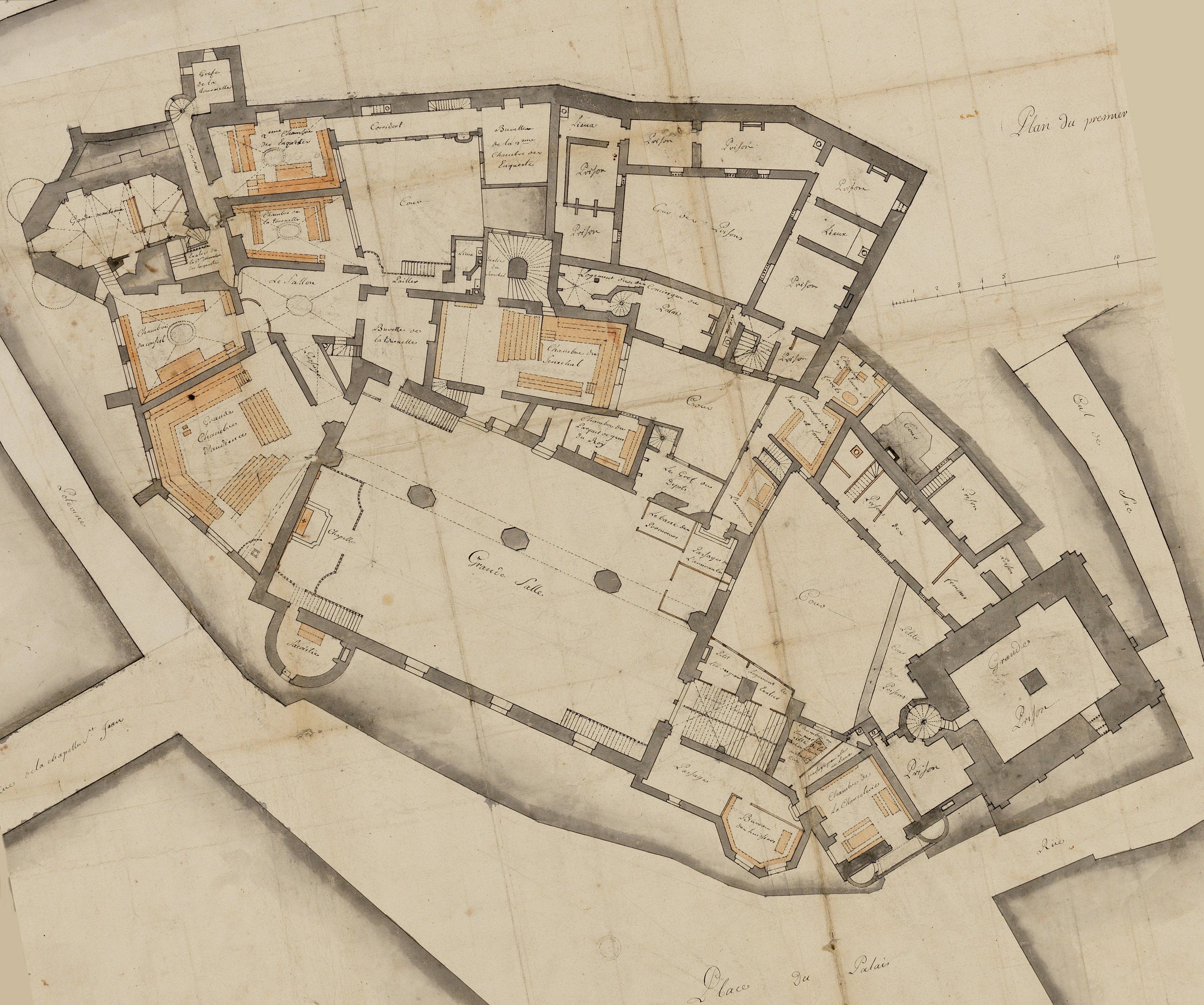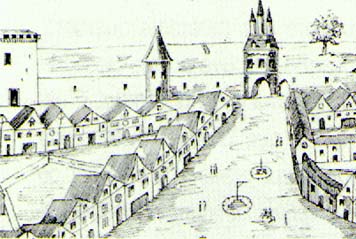
Bordeaux : Sites of Justice I

The Ombrière Palace (Le Palais de l'Ombrière)
The Ombrière Palace in the Eighteenth Century
|
The Ombrière Palace, so called because of the shade of the large trees that lined the avenue in the past, was the principle residence of the Duke of Aquitaine in the Middle Ages. Louis VII, Eleanor of Aquitaine, the Kings of England and important personalities would stay here. The Palace has served as an administrative building since half way through the Middle Ages, when it housed the Court, and the offices of the Seneschal of Gascogny and of the Constable, i.e. the provincial judicial and financial administration during the English era. After the alliance with the Crown of France, the Parliament of Bordeaux (as well as the Admiralty of Guienne) held its audiences here. |
The Parliament, that consisted initially only of a President and seven counsellors, was composed of one hundred and seventeen formal offices on the eve of the Revolution: a first president, nine Presidents à Mortier (named after the fur caps that the judges wore), two Knights of Honour, four Presidents of Inquiries, two Presidents of Petitions, ninety four Counsellors, a Procurator-general (the legal voice of the crown), assisted by two advocates-general, and two head clerks.)
The jurisdiction including the former territories of Guienne, Gascony, the landes, Agen region, Condomois, Labourd, Limousin, Perigord, Bazadais and Saintonge was divided into thirty senechalcy courts that correspond to our contemporary Court of First Instance. It extended to the entire Court of Bordeaux of today as well as those of Agen, Toulouse, Pau and part of Poitiers.
From 1557 to 1570, Michael de Montaigne, who at 24 years old became his father's successor to the office of Counsellor at the Court of Aides de Perigueux, held this office until this jurisdiction allied with the Parliament of Bordeaux. According to Loysel, it was one of the "lights of the jurisdiction".
|
The map particularly emphasized the main room with a maze of courts. It is a vast, irregular composition, attached on one side to the tower of the "castrum" of the southeast angle and on the other side, to a keep where the internal communications occurred awkwardly. Based on what visitors would say, it was "hardly flattering": "We saw the Palace of the barristers that was comprised of a rather mediocre room with a row of pillars in the middle that created two differently sized alleys, all dirty and unkempt, furthermore the rooms are small, dark and dirty, almost as much so as in Poitiers "(Claude Perrault). |

|
View of the Ombrière Palace from the palace 
|
The rectangular keep, placed 4 meters in front of the rempart was a wide rectangular tower of 18 meters by 14 without stairs in the interior. It was known as "the Archery" because it was backed by a barracks where the Royal Archers stayed. The tower on the angle was engraved on the wall. A triangular place marked "of the Palace" extended out in front of the Palace. The Ombrière remained the office of the courts and the main prison of Bordeaux until the Revolution. |
1810-1846 - The "Palace of the Civil Courts".
|
The Ombrière was due since 1791 to be demolished with a view to widening of the contemporary Ombrière Palace Street; the Royal Court, composed of four chambers in 1837, with the territory extending to the Gironde, Charente and Dordogne and the Court of First Instance was installed in the old College of Guienne, behind the Great Market (now the sports stadium and the former Victor Hugo market). Lacking space, in particular with respect to the criminal courts, the Assize Court was situated close to the prisons of Fort Ha in the location of what is now the National School of the Judiciary. |
The Assize Court was based close to the prisons of Fort Ha until 1846 |
|
The "Palace of the Civil Courts" (1810-1846) Main entrance
|
The architect, Bonfin, in 1810 was given the task of the creating a dignified entry to the name "Palais of the Civil Courts" where both the Royal Court of Appeal and the Court of First Instance were located. There were two entries: one on Ayres Street and the other, the main entrance, on Gourgues Street. The latter was adorned with four Dorian pillars framing a large threshold, the entirety coated by a simple entablature and a type of crown. This was the provisional Law Courts of Bordeaux until 1846.B.F. |
Copyright ©1999-2000 Bertrand Favreau and L.P.O. Editions. All rights reserved.
